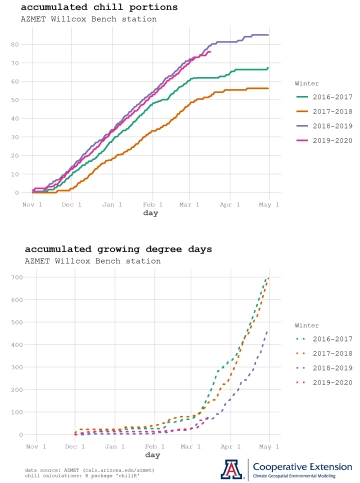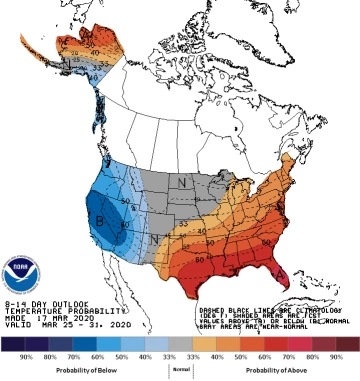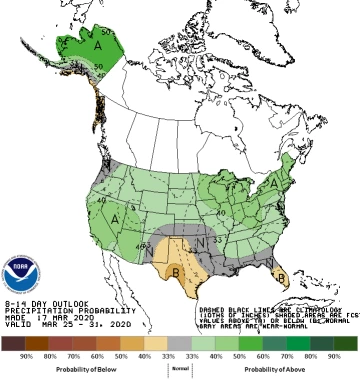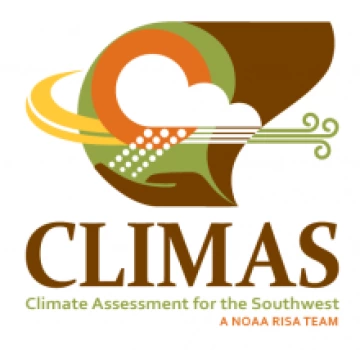< Back to Climate Viticulture Newsletter
Hello, everyone!
This is a 2020 March special issue of the Climate Viticulture Newsletter – a quick look at some timely climate topics relevant to winegrape growing in Arizona and New Mexico.
An Update on Vine Dormancy and the Start of the Growing Season
Accumulated chill portions and growing degree days since the beginning of March (solid and dotted pink lines, respectively) continue to closely follow chill and heat accumulations from winter 2018-2019 (solid and dotted purple lines, respectively). At least this still is the story at the Arizona Meteorological (AZMET) Network Willcox Bench station, located in the south-central part of the Willcox American Viticultural Area (AVA), through March 16th. It also still appears to be the case at other relatively warmer grape-growing areas in the region, based on accumulated-growing-degree-day information from the National Phenology Network.
By comparing current accumulated chill portions and growing degree days to recent years, you might’ve guessed that we’ve taken the ‘analogs’ page from the weather forecasting playbook. Such an approach for that industry looks at impacts recorded during past weather events that are like the one being forecasted to give forecasters a better idea of upcoming impact risks. In our context, we’re simply trying to get a better idea of when the growing season might start by pairing information in these graphs with your experience from previous years.
You also might’ve guessed how important it is to have records of when vine growth stages occurred in past years for an analog approach to be useful. Interestingly, the opportunities don’t stop there. With a collection of growth-stage observations over several years and from several vineyards, it becomes possible to develop region-specific phenological models with greater predictive power. Let’s keep working together on this!

Jeremy Weiss
The Outlook for Late March Temperature and Precipitation
Like at the beginning of the month, variable weather continues to be the anticipated backdrop for the rest of March, especially as one moves towards the western part of the region. There is a slight increase in chances for above-normal temperatures across eastern New Mexico (light orange area on map) for the last part of the month. Equal chances for above-, near-, or below-normal temperatures exist for central New Mexico (gray area on map). Slight to moderate increases in chances for below-average temperatures run from western New Mexico to western Arizona (light and medium blue areas on map, respectively). Based on current weather forecasts and this 8-14 day temperature outlook, it appears more likely than not that vines won’t be rushing too far ahead or falling too far behind of the initial schedule from last year and will start the growing season on a similar date.

NOAA CPC
The anticipated variable weather for the last part of the month also leads to a slight increase in chances for below-normal precipitation for eastern New Mexico (light brown area on map). Equal chances for above-, near-, or below-normal precipitation exist for central New Mexico (gray area on map). There are slight increases in chances for above-normal precipitation across extreme western New Mexico and all of Arizona (light green areas on map). With precipitation from November through February and the first half of March, along with current weather forecasts and this 8-14 day precipitation outlook, the region seems like it will fare relatively well this dormant season in terms of soil moisture. Please let us know if this translates to less need for irrigation and good initial growth this spring.

NOAA CPC
With guidance from the University of Arizona, the 2020 Viticulture Symposium scheduled for March 31 has been cancelled. But, don’t worry. Organizers and speakers are looking for other opportunities in which to share their information with you. For instance, we’ll be bringing our planned presentation topics into upcoming newsletter issues.
For those of you in southeastern Arizona, Cooperative Extension manages an email listserv in coordination with the Tucson forecast office of the National Weather Service to provide information in the days leading up to agriculturally important events, like late spring freezes and excessively windy days. Please contact us if you'd like to sign up.
Please feel free to give us feedback on this special issue of the Climate Viticulture Newsletter, suggestions on what to include more or less often, and ideas for new topics.
Did someone forward you this newsletter? Please contact us to subscribe.
Stay healthy!
With support from:




